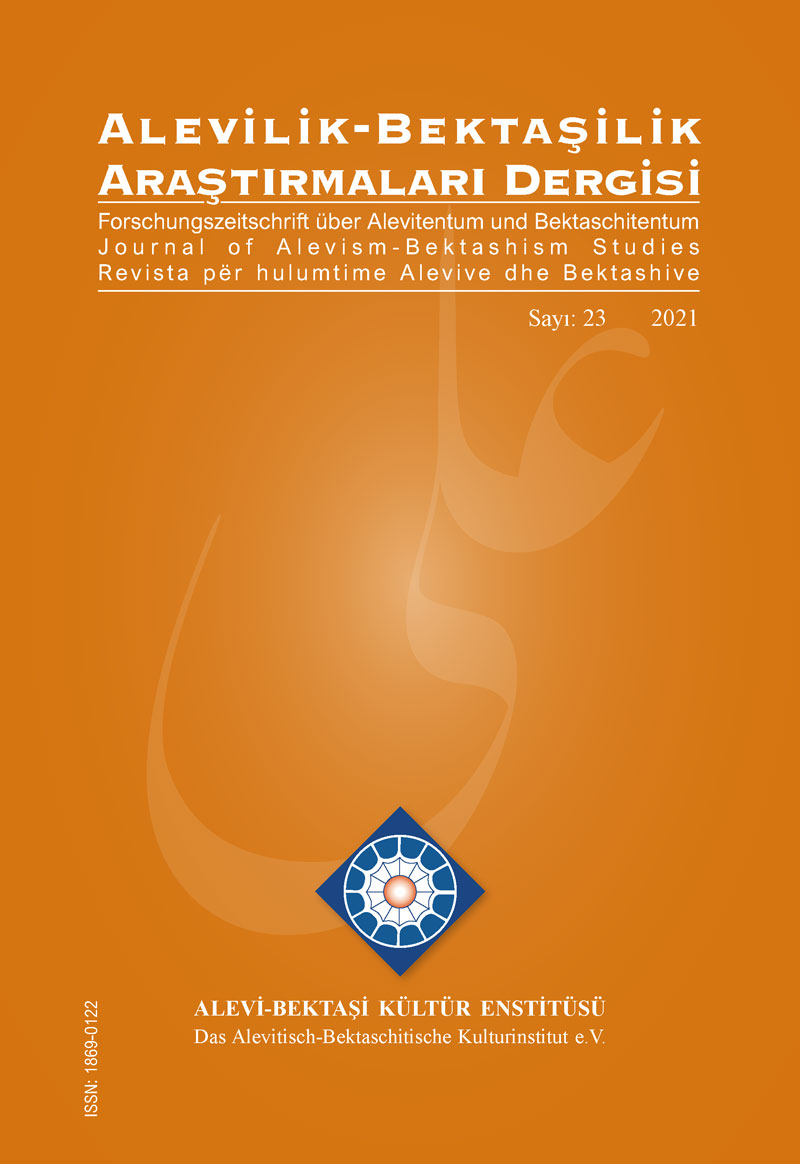The Ocak (House) of Hacili Pir Sultan in the Context of Transformation of Alevism
DOI:
https://doi.org/10.24082/2021.abked.322Keywords:
Institution of dede, the ocak of Pir Sultan, the village of Hacili, Buyuk Dam, Mehmet CelebiAbstract
This paper discusses the transformation of the institution of dede (religious leader), one of the building blocks of traditional Alevism, due to urbanization on the example of the ocak (hearth) of Hacili Pir Sultan. The migration of large populations from villages to urban centres for socio-economic reasons also affected the functioning of the institutions of Alevism. Alevi communities, which have actively maintained the dede-talip relationship before the rural-urban migration, moving away from the traditional environment after the migration, could not maintain this relationship in the new socio-economic order. The failure of establishing the same dede-talip relationship in the city centres has negatively affected the functioning of the basic institutions od Alevism, particularly the institution of dede.
The ocak of Pir Sultan, headquartered in the village of Banaz in Sivas, has two branches, of which one traces the line of Pir Mehmet in the village of Cambulak in Almus district of Tokat, and the other one line of Er Gaib in the village of Hacili in Pulumur district of Tunceli. This paper focuses on the ocak of Hacili Pir Sultan, which traces the line of Er Gaib and is still trying to maintain its function today. Mehmet Celebi, one of the pirs of this ocak, leads the ocak, which is a historical cemevi and the house of the ocak. The establishment of this historical place, called “Buyuk Dam” by locals, dates back approximately six hundred years, when Pir Sultan returned to Anatolia from the tekke (lodge) in Ardabil. Featuring the narratives about the Buyuk Dam, this paper addresses the life of Mehmet Celebi and the process of the institution of dede under a separate title in terms of the transformation of this institution.
Today, we know that cems are no longer performed in the Buyuk Dam. The village population has decreased steadily for decades due to the military coup in 1980., the Erzincan earthquake in 1992., prolonged periods of the state of emergency and changing socio-economic conditions. The rural-urban migration with the effect of urbanization deepened this decrease, damaged the traditional dede-talip relationship and negatively affected the functioning of the ocak of Hacilli Pir Sultan. In addition, as a result of the face-to-face interviews, we determined that dede Mehmed Celebi has great importance for both villagers and talips, and that has an effective and critical role in maintaining the functioning of the ocak today.








